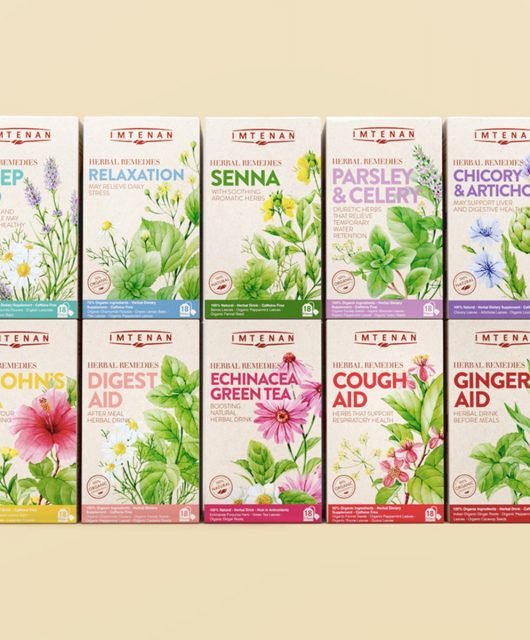Influencer Marketing Through Uncertain Times
The current health crisis is changing the way we all work. Brands are facing completely uncharted territory across all disciplines – and influencer marketing is no exception.
We’ve seen unprecedented spikes in social media usage. All online activity is being refocused to ensure there’s empathy with today’s climate. And coupled with the continued rise in trust in influencers, there remains huge scope for collaborative content.
Influencers can play an important role in these challenging times, as illustrated by the Finnish government who recently marked social media influencers as ‘key workers’. Officials enlisted the likes of bloggers and YouTubers to share accurate and timely information on the virus, reaching audiences not covered by traditional media.
With only 8% of consumers believing brands should stop ad activity due to the pandemic (as long as the tone is right), the PUNCH Influencer marketing team at Brands2Life considers the questions you should be asking at this time…
Should social only ‘do good’?
Even before the crisis, consumers (and influencers) were becoming more demanding of brands, expecting them to stand for something beyond a product, experience or message. Brands had to drive social justice on some level – and this had to come from a place of authenticity.
Over recent weeks, many brands have transformed their business strategies to be more purpose-led and reflect today’s needs:
- London-based fitness studio 1REBEL has offered the use of its London clubs to the NHS, which it said could be used to house 300-400 hospital beds.
- Workout wear brand Gymshark renamed itself Homeshark to drive the ‘Stay At Home’ message, (with the announcement post becoming its most liked post in its social media history).
- Popular meditation app, Headspace, has partnered with Hyatt Hotels to create free meditation and sleep therapy sessions entitled ‘Weathering the Storm’ – accessible via their website and app and shouted about by influencer partners.
Additionally, there’s an abundance of brands using social to demonstrate support for key workers and those on the NHS frontline. Both Jo Malone and LinkedIn created bespoke video/gif content to advocate the #ClapForOurCarers initiative, L’occitaine sent free hand cream to NHS hospitals, and Sophia Webster gifted trainers to 200 NHS workers tagged by their loved ones in an Instagram post. Influencers are also actively asking their audience which brands are supporting NHS workers, so that they can use their social clout to further promote such initiatives.
The takeaway for brands is this: use social channels and influencer partnerships to support consumers. Consider what resources, collaborations or experts are accessible that can make a difference to everyday lives, and how can these be best delivered. This should be a focal point of a realigned strategy and is the perfect opportunity to put a human face to a brand.
Yet it’s not just about content that cares. As seen with the increased number of users and views on TikTok, consumers are still in need of humour and entertainment to relieve the stresses of everyday ‘Stay At Home’ life. Content that aims to humanise a brand can come in different forms. And now, amongst the worry and fear, may be the best time to experiment with entertaining content creation and influencer partnerships that evoke a LOL and a warm, fuzzy feeling.
Is macro the new micro?
The last 12-18 months have been dominated by the rise of the micro influencer. These are people with a small following but a mighty engagement rate. Their audience have a genuine interest in the topics they talk about. Compare this to the macro influencer – characterised by a higher following count but typically lower engagement rate. They can offer brands reach and awareness but not the quality engagement they’re after.
What we’ve seen with the current global situation is the resurrection of the macro influencer, or ‘celebfluencer’. Celebrities such as Idris Elba have taken to Twitter to offer advice on the symptoms of COVID-19 to captivated audiences. Stars like Lizzo and Miley Cyrus are boosting morale virtually via group meditation exercises or sing along videos. The notion that we’re all in this together has blurred any previously perceived boundaries and shifted the focus from authenticity to hard reality and shared experiences. Suddenly, many celebs have an element of humility and purpose we haven’t necessarily seen before.
Just like it’s not necessarily the best idea to switch off all marketing and comms at this time, any brand that is questioning its ongoing work with ambassadors shouldn’t either. Your micro and macro influencers might just be the best way you can continue to be showing empathy and relevance amongst your audience. It’s more a case of re-evaluating your strategy and adapting it to be increasingly empathetic, rather than turning it off.
Is Instagram still king?
Ten years since its launch, and now with more than 1 billion monthly active users, Instagram is widely regarded by marketers as the most important channel for influencer marketing. Additionally, with 81% of users turning to the channel to research products and services, and 80% using it to decide whether to buy a product or service, the opportunity for brands to drive sales (and advocacy) is huge.
Because today, it’s more than just a photo gallery. It’s a place where short-term video increasingly stands out. In fact, native in-feed video content sees higher engagement rates and drives more follows than static content. And with the uptick in filmed Stories content, videos on Instagram continue to soar as users crave the intimate and human connection now lacking in their everyday lives.
Filmed content with a focus on home workouts, self-care or wellbeing is understandably massive right now. Take fitness guru, Joe Wicks. He’s seen an overwhelming response to his free daily morning PE sessions, making a difference to parents juggling working from home and home-schooling. Whilst the sessions are streamed on YouTube allowing for a longer live video than Instagram permits, he never overlooks the opportunity to promote them to his 3.4 million strong Instagram audience – which trumps his YouTube subscribers by 1.25 million.
While we might be spending more time watching videos at home, that doesn’t necessarily mean longer content is key. TikTok videos have a limit of only 15 seconds when created in app, and many users are embracing these little bursts of fun. Fashion influencer ‘IntheFrow’ has recently reported that videos created on TikTok have been the first of any to hit over a million views, despite only having around 50k followers on the platform (compare this to her 888k followers on Instagram).
And unlike Instagram, TikTok hasn’t shaped its algorithm based on user behaviour or for marketing purposes. TikTok rewards videos based on the engagements they receive, no matter if a user has shown ‘interest’ in topics related to that video (as per the Instagram algorithm).
Brand presence on TikTok, however, is still few and far between, with the likes of Red Bull and Too Faced being the first to try it out. Typically, content is humorous and memorable but not necessarily focused on conveying messaging about a product or campaign, which might explain brands’ reluctance.
To that end, Instagram’s capabilities are still unrivalled. The platform continues to evolve, such as the recent introduction of the ‘co-watching’ tool allowing users to view video content in groups (whilst staying at home). It will no doubt continue to change with consumer needs. That said, there is potential for competition on the video front. Brands and marketers should be considering other platforms, such as YouTube and TikTok – depending on their content and objective. Those that tap into consumers’ current desire for purposeful and humorous content will garner the most brand love and advocacy.
Getting the basics right
Amidst all the uncertainty and shifting strategies, it’s essential to remember the three basics of influencer marketing.
- Authenticity. Audiences are looking for guidance and support from trustworthy sources, which is why working with the ‘right’ influencer is, as ever, imperative. Assessing an influencer’s authenticity can be a laborious process but shouldn’t be difficult if you know what to look for. Do they come across as genuine? Are their social channels dominated by brand or product collaborations you haven’t seen them talk about organically? Do you believe their endorsement of a product?
- Awareness. Stay tuned to your audience preferences and needs. Content and messaging should be true to your brand not just topical for the sake of it. Influencer partnerships are as important as your customer relationships to a point; it’s not a short-term fling. Finding those that best align to your brand objectives, beliefs and approach is key to long-term affinities.
- Agility. Being flexible and adapting to changing situations will make for strong learnings and an ever-improving strategy. What has worked in previous influencer collaborations may not work in the current environment, so if content isn’t performing as well as you’d expected, consider the reasons. Talk to the influencer about how it was received on their channel and perhaps try an alternative format or platform. Being collaborative with an influencer to troubleshoot problems will undoubtedly make for better results.
So, what can we take away from this? Current world events will continue to have an impact on consumers for many months to come. Brands should be considering the intended purpose behind their influencer marketing partnerships and the subsequent channel it’s best suited for. Using social and influencer marketing as a cause for good is paramount, however, keeping virtual morale up is also a great way to further humanise a brand.
The world has changed quickly, and though it seems daunting, it’s necessary for both brands and influencers to speak with genuine purpose more so than ever. By spreading factual, positive and authentic messages, we can work with influencers to have a positive impact on the way that millions of users are feeling and behaving during this uncertain and challenging time.





